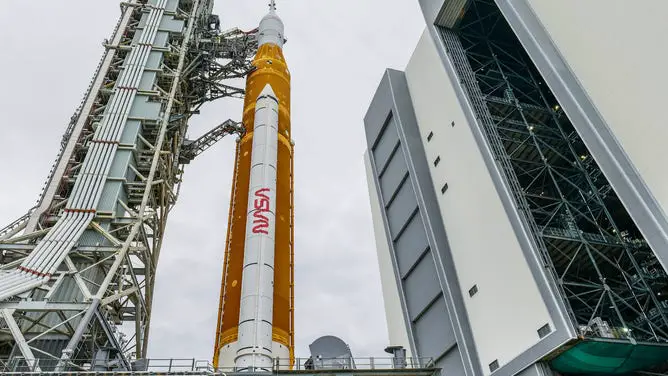NASA’s next endeavor to return to the moon, Artemis I, is set to launch on Wednesday at 5:04 p.m. Australian Eastern Daylight Saving Time. It has been postponed five times, with this being the third attempt.
Returning to the moon is part of NASA’s Artemis program. Known as the goddess of the moon in Greek mythology, Artemis was Apollo’s sister. And the story of bringing Artemis I into space has been tragically Greek in nature.
The SLS, a new rocket from NASA, will be used for the Artemis missions. Liquid hydrogen and oxygen are combined to power the SLS as it travels into space.
After its launch, the world will have seen the largest and most powerful rocket ever built, measuring 98 meters in height and boasting 15 percent more power (thrust) than the Saturn V, the rocket utilized for the Apollo missions.
It will be able to transfer about 40 tonnes of material to the moon, which is roughly equivalent to what a truck can carry on the road in the form of capsules, freight, and ultimately humans.
The intended launch date for Artemis I was August 29. One of the engines wasn’t cooling down correctly throughout the countdown, however. Overheated engines may have disastrous effects because of problems with the fuel and chemical processes.
After analyzing the data, NASA came to the conclusion that the temperature sensor was broken. A tiny amount of liquid hydrogen was also leaking. In an effort to fix the sensor and the gasoline leak, a workaround included filling the tank a little more slowly.
NASA made another attempt at a launch almost a week later. The workaround of slowly filling the tanks proved effective for a time. However, a significant fuel leak subsequently developed that was unfixable. To avoid the issue, it meant they would have to wait and repair the seals surrounding the pipe.
In a hurry, NASA changed the seal. Before having to be rolled back to the Vehicle Assembly Building, which serves as the rocket’s hangar, in essence, the rocket and its payload are only allowed to remain at the launch pad for a certain length of time.
This is necessary for both scheduling and safety considerations, since other missions, including the SpaceX Crew-5 mission, which launched in early October, must also launch.
NASA was prepared for the third try after fixing the seal and testing it. Before reaching landfall in Florida, Hurricane Ian passed across the Caribbean, wreaking havoc in places like Cuba. NASA decided against trying the launch for safety concerns and instead relocated the rocket back to the VAB where it remained until the hurricane’s damage could be repaired.
The launch was postponed by NASA until November 14. NASA had to change the date since Hurricane Nicole had just made landfall in the US.
Next up is November 16, which is now. Temperature sensors, fuel leakage, and catastrophic storms have all been problems for NASA. But Artemis will soon go to the moon.
Source: Canberratimes




